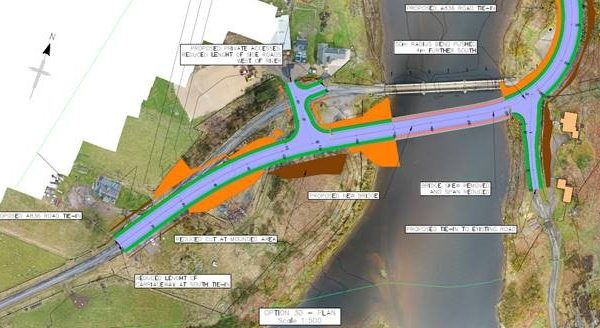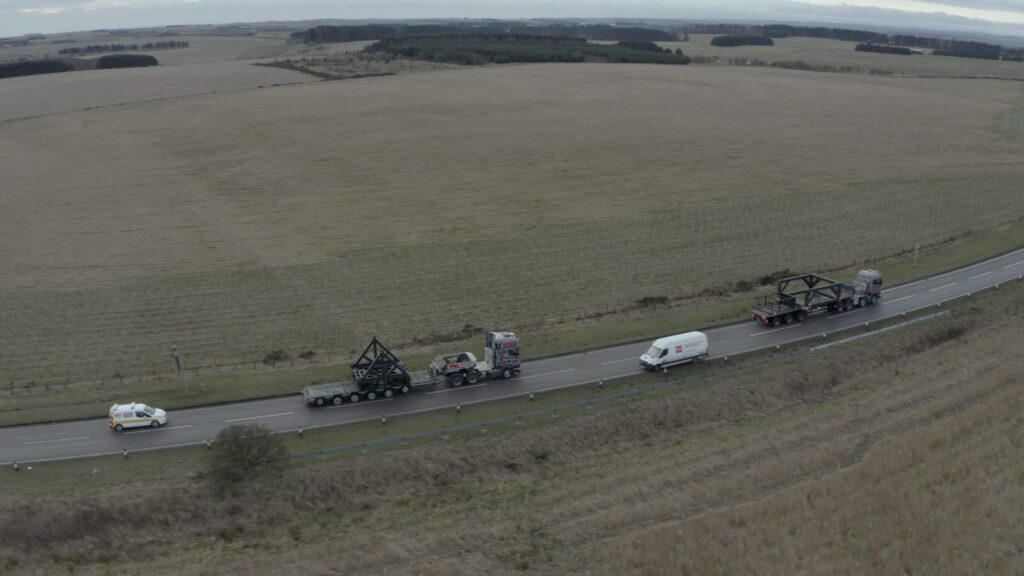Is the UK’s space mission flying off course?
25th Feb 2022
The UK’s space ambitions got off to a great start with plans for several launch facilities across the country and numerous startups appearing on the scene. However, some of those plans have changed over time placing the country’s ambitions on a precarious footing.
Out of all the proposed launch sites, the one that’s ended up with the brightest-looking future is the launch facility being planned on the island of Unst, which is part of Scotland’s Shetland Isles. The SaxaVord Space Centre, which was originally called the Shetland Space Centre is yet to receive planning approval, but has come up against very little opposition from locals or environmentalists.
The proposed launch facility at Melness in Sutherland on the west coast of Scotland, however, did come up against significant opposition from locals, environmentalists and the likes of RSPB as well as climate change protest group, Extinction Rebellion, receiving hundreds of objections to their planning application. The planning application did eventually get approval, but by that time, the largest partner in the project, Lockheed Martin, had jumped ship and instead moved their launch plans to the less controversial site in the Shetland Isles. This left only one launch service at Sutherland, as the plans had been scaled back to include only one launchpad and facilities for only one type of fuel.
Not only has the Sutherland site been mired in controversy over the proposed damage to the peatfields on which it is to be built, but there had also been some questions asked over some of the financial and job creation claims made by the launch provider, Orbital Express Launch Ltd. (Orbex Space). The company had made hugely inflated claims on the number of people it employed in the UK, which were soon revealed to be inaccurate following a forensic examination of their accounts.
Further examination of Orbex Space accounts also revealed that they had to be bailed out by local enterprise group, Highlands & Islands Enterprise, with a £675,000 loan to cover operating costs, despite the company’s claim to have raised 10s millions of pounds in investments.
The biggest problem, however, that the UK space industry is facing is the question of who is going to pay for the infrastructure to reach the Scottish launch facilities. We have recently seen images and video of Orbex transporting their newly built launch tower to its temporary home in Kinloss from its manufacturing base in Peterhead – a fairly straightforward journey for the huge lorries along motorways with a police escort. The launch location in Sutherland is a very different story altogether.

A bridge too far?
In order to facilitate the transportation of hardware, including the launch tower and the 19m long Prime rocket, similar-sized vehicles (or larger) will have to make the long journey along winding single track road and over the 140-year-old Naver Bridge, taking a dog leg turn at the end of the bridge. This all presents a major barrier to not only getting the hardware in place, but also the building materials and heavy plant equipment. Not only are the roads and bridges not suitable, but there remains a huge question over who is going to pay for the required infrastructure. Or at least that was the case until a very unusual development recently.

Following on from initial consultation in which Highlands & Islands Enterprise were informed by construction experts that costs were likely to escalate beyond the initial estimates and that early-stage surveys revealed a far more complex construction project lay ahead. Coincidentally, around the same time, an application had been submitted to Marine Scotland to build a replacement Naver Bridge along the route to the launch location under instruction from Highland Council, with the council claiming that the project (to widen the route and create a stronger bridge) was to improve the North Coast 500 driving route for tourists. Now, whilst we understand that travelling tourists don’t often do so by Heavy Goods Vehicle, we can only assume that Highland Council was future proofing the route just in case this does become a thing in the distant future.

So, bypassing all the usual routes for funding (and planning?), Highland Council tapped directly into the HM Treasury “Levelling Up Fund”. So, we now know at least the answer to the question of who was going to pay for this particular section of infrastructure required for the successful implementation of launch facilities at Melness. There still remains the question of who will pay for the rest of the infrastructure required.
But it’s not just the infrastructure that requires an injection of funds. A quick examination of the UK Space Agency’s latest expenditure shows a very worrying pattern of spending. In fact, you can look at any month or year of expenditure for the UKSA since it began and you will see the very pattern I refer to. The pattern remains the same year upon year. There is very little by way of any indication that the UK is sitting right on the edge of a momentous change in its space ambitions. No sign of any significant investment in the UK’s New Space. Instead, we see the continued funding of the aerospace and defence giants such as Lockheed Martin, Boeing and BAE Systems taking up the bulk of the agency’s annual budget.
With several launch sites planned across the country, a slew of startups appearing left, right, and centre and a country set on an ambitious path of being the first in Europe to launch from its own soil into orbit, you would expect to see considerable change in the space agency’s priorities – at the very least in this crucial pre-launch period.
The Reaction Engines Oddity
For years the UK Space Agency has been pumping millions into a company called Reaction Engines Ltd. who have been developing an aeroplane engine that they refer to as “space technology”. Just in January alone, the company was in receipt of £450,000 from the agency and in November £490,000. Reaction Engines continues to be one of the largest recipients of UKSA funds. In 2015, BAE Systems took a 20% stake in the company and the company has since received £54 million from the UK government via UKSA. Then in 2018, Boeing also took a stake in the business for a reported $30 million. In 2020 the company made a loss of £15m, in 2019 a loss of just over £14m. In 2018 its loss was almost £17m and in 2017 the loss was just over £5m with a loss of just over £6m seen in 2016. So, why is this all important?
Well, it all goes back to sometime around 1982 when British Engineer, Alan Bond, started work on an engine for a space launch system, which then resulted in a joint venture between BAE Systems and Rolls Royce. The venture didn’t get the government support required to get it off the ground and eventually shut down in 1989. In the same year, Alan Bond, John Scott-Scott and Richard Varvill formed Reaction Engines Limited and revived the project – albeit with variations – as a private commercial enterprise. You can read more about it here…
The UK Space Agency has been funding that project ever since. And continues to do so. As well as other “age-old” projects by Lockheed Martin.
We do not see this as a failure of the UK Space Agency as it is our understanding that they have been rendered toothless by Boris Johnson’s government recently, with responsibility for space policy and strategy shifting to Department of Business, Energy and Industrial Strategy in January 2021 following the government’s “Space Landscape Review” and the formation of a new cabinet committee, the National Space Council. Although this doesn’t explain the historical failures to direct spending to projects that would truly send the country’s space ambitions upwards.
Since taking over the strategic direction of the UK Space Agency, the government has dropped out of the European Galileo satellite navigation programme, abandoned its own planned satellite navigation programme, purchased a major share of OneWeb – believing they were investing in a satellite navigation constellation (spoiler: OneWeb satellites aren’t suitable for satnav). So, it is fair to say that expectations of the BEIS ability to formulate progressive, innovative and ambitious strategy are extremely low.






Thank you for your comment! It will be visible on the site after moderation.